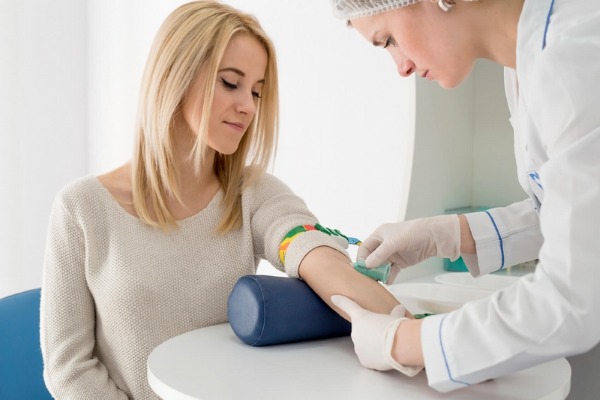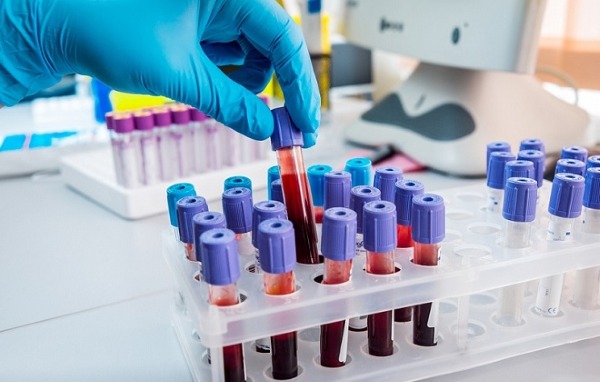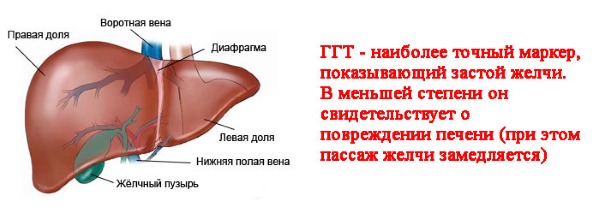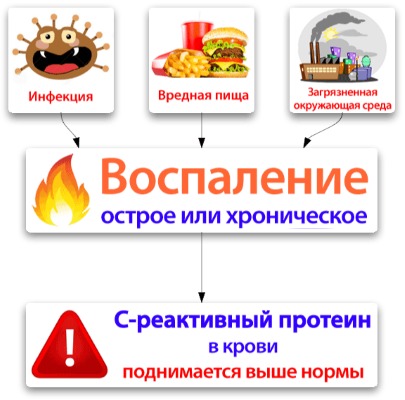A biochemical blood test is a fairly accurate study that allows you to evaluate the work of internal organs and body systems. However, this analysis has a lot of subtleties, for example, depending on the age of women, the norms of research indicators may differ.
What is a biochemical blood test
Blood is a unique substance in the human body for detecting certain defects in the human body. It is present in all organs and tissues, therefore it includes many different substances that are formed during their work.
Biochemistry quite accurately helps to determine the presence and content of these substances and, by comparing the obtained data and fixed norms, to find out about the state of the body and the causes of possible diseases. In some cases, this study is the last option available to the doctor to confirm the disease.
In addition to diagnostic purposes, biochemical analysis is used in many specialized medicine to determine specific indicators. During the study, blood from a peripheral vein is used. Typically, blood is drawn from a vein near the elbow joint. However, when access to this site is not possible, for example, in the event of a fracture, any other site is suitable.

Indications for analysis
Usually, a biochemical blood test is prescribed for women by a doctor for diagnostic purposes, if violations of the norms in the work of certain organs are detected, or the general condition of the patient. Also, the procedure is carried out to check the quality of the prescribed treatment for already identified diseases. At the same time, the list of necessary indicators is determined by the doctor individually for each case.
The indications for the analysis may be problems with the following organs:
- liver;
- kidneys;
- biliary system;
- endocrine system;
- blood systems;
- Gastrointestinal tract;
- musculoskeletal system.
In combination with some other procedures, biochemistry can reveal the correct pathology of almost any organ.
Preparing for blood collection
To obtain correct data, blood donation must be carried out observing some important rules:
- It is necessary to carry out the procedure on an empty stomach, and fasting should be at least 8 hours, but not more than 1 3 hours. Therefore, the most favorable time for the study is from 8 to 11 am. Avoid heavy food and any beverages other than water 1-2 days before the procedure.
- When taking any medications, you should check with your doctor whether it is necessary to stop the course of taking medications and the duration of abstinence.
- 24 hours before donating blood, you must exclude any amount of alcohol consumption, and stop smoking at least 1 hour before taking.
- 72 hours before the study, you need to isolate yourself from stress (both emotional and physical). Already being in the place of the analysis, you should sit in a calm state for some time before entering the office.
- If it is necessary to re-examine it, it is desirable to carry it out in the same institution.
Interpretation of analysis results
Since the norm of a biochemical blood test in women differs significantly from the norm in men, first of all, doctors determine the gender of the patient. The same thing happens with age.
This process is an analysis of the comparison of existing standards for certain indicators and the data obtained during the diagnosis. The analysis is carried out on a special form - a table containing all indicators that are determined by the biochemical laboratory.
A ready-made table with the results is provided to the patient, from which he can find out the ratio of his indicators to the norm. The decryption process generally takes place fairly quickly: within 2 to 3 days. Also in the modern world decryption can be done independently using special online platforms on the Internet.
If any indicators deviate from the norms, the doctor prescribes additional examinations to determine the most accurate diagnosis.
Decoding table for biochemical blood test in adults
| Indicator in the study | Norm |
| Total protein | 63-87 g / l |
| Protein fractions: albumin globulins (α1, α2, γ, β) | 35-45 g / l 21.2-34.9 g / l |
| Creatinine | 44-97 μmol per l - in women, 62-124 - in men |
| Urea | 2.5-8.3 mmol / L |
| Uric acid | 0.12-0.43 mmol / l - in men, 0.24-0.54 mmol / l - in women. |
| Total cholesterol | 3.3-5.8 mmol / l |
| LDL | less than 3 mmol per liter |
| HDL | higher or equal to 1.2 mmol per l - in women, 1 mmol per l - in men |
| Glucose | 3.5-6.2 mmol per liter |
| Total bilirubin | 8.49-20.58 μmol / L |
| Bilirubin direct | 2.2-5.1 μmol / L |
| Triglycerides | less than 1.7 mmol per liter |
| Aspartate Aminotransferase (AST for short) | alanine aminotransferase - the norm in women and men - up to 42 U / l |
| Alanine aminotransferase (ALT for short) | up to 38 U / l |
| Gamma Glutamyl Transferase (GGT for short) | normal values of GGT - up to 33.5 U / L - in men, up to 48.6 U / L - in women. |
| Creatine Kinase (abbreviated as CC) | up to 180 U / l |
| Alkaline Phosphatase (ALP for short) | up to 260 U / l |
| Α-amylase | up to 110 E per liter |
| Potassium | 3.35-5.35 mmol / l |
| Sodium | 130-155 mmol / l |
Biochemistry standards in women by age: table
| Substance | Indicators | The norm in women | Notes |
| Protein | Total protein | 64-83 g / l | In children under 17: 47-73 g / l Over 60 years old: 62-81 g / l |
| Albumen | Z5-50 g / l | For women over 60: 34-38 g / l | |
| C-reactive protein | Up to 0.5 mg / l | ||
| Myoglobin | 1Z-76 μg / L. | ||
| Rheumatoid factor | 0 | ||
| Ferritin | 1Z-400 μg / l | Children may have other indicators | |
| Enzymes | ALAT | Up to 31 U / l | |
| ASAT | Up to 31 U / l | Children less than 18 years old have other indicators | |
| Alpha amylase | 27-100 U / l | ||
| Alkaline phosphatase | Up to 240 U / l | ||
| Lipids | Triglycerides | 35-40 years old - 0.45-1.99 40-45 years old - 0.51-2.16 45-50 years old - 0.52-2.42 50-55 years old - 0.59-2.63 55-60 years old - 0.62-2.96 60-65 years old - 0.63-2.70 | |
| Total cholesterol | 3-6 mmol / l | ||
| Cholesterol-HDL | 0.8-2.2 mmol / l | ||
| Cholesterol - LDL | 1.92-4.51 mmol / L | ||
| Carbohydrates | Glucose | 3.88-5.83 mmol / L | For women 60+: up to 6, 38 mmol / l |
| Fructosamine | 0-285 μmol / L | ||
| Pigments | Total bilirubin | 3.4-17.1 μmol / L | |
| Bilirubin direct | 0-3.4 μmol / L | ||
| Nitrogen components | Creatinine | 53-97 μmol / l | |
| Uric acid | 150-350 μmol / l | In children 120-320 μmol / l | |
| Urea | 2.2-6.7 mmol / L |
Normal indicators during pregnancy
Women in a position are experiencing tremendous changes in the body, therefore, the norms of a biochemical blood test in some categories differ from the norms of other patients. When carrying a child, some criteria change.
Changes for the 3rd trimester:
- increased globulin;
- decreased urea;
- increased phosphatase.
Towards the end of pregnancy:
- decreased creatine;
- a slight decrease in potassium;
- decrease in magnesium;
- decreased iron levels;
- albumin level can be changed in both directions.

The rest of the indicators in pregnant women should remain unchanged, which will indicate a positive pregnancy, as well as the health of the mother and baby.
The norm of trace elements in women
Each of the microelements is an important component of a woman's body, contributing to its correct work. Therefore, they must be treated with due care.
The standard trace minerals that can be seen using biochemistry include:
- Sodium. Promotes the absorption of calcium, participates in the reaction of the skin to external stimuli. Deviations from the norm can prove the presence of diabetes, problems of the urinary tract, inoperability of the kidneys or liver (1-3 mmol / l);
- Potassium. Responsible for the work of the heart. Inconsistency with fixed indicators may indicate problems with blood vessels, gastrointestinal tract organs, diabetes and cancer (3, 5-5, 3 mmol / l);
- Chlorine. Participates in the normalization of the pH of the circulatory system. Inconsistency with fixed indicators may indicate the inoperability of many organs, a lack of fluid in the body, and hormonal abnormalities. (9Z-11Z mmol / l);
- Phosphorus. Promotes the normal functioning of various human tissues. (1,43-2.13 mmol / l up to 2 years; 1,43-1.78 mmol / l up to 1 3 years; 0.87-1.43 mmol / l less than 60 years; 0.93-1, Z2 mmol / l for the elderly);
- Magnesium. Contributes to the normalization of processes at the cellular level, is responsible for the reaction of the muscle cover to external stimuli. Inconsistency with fixed indicators may indicate diseases of internal organs, as well as ill-conceived nutrition (0.66-1.03 mmol / l);
- Iron. Responsible for the normal functioning of the gastrointestinal tract and the normalization of metabolism (8.9-30.03 mmol / l in the elderly; 9-23 mmol / l up to 14 years; 7-18 mmol / l up to 2 years);
- Calcium. Responsible for the work of various internal systems, also takes part in the formation of bones. Non-compliance with the norm may mean a lack of vitamins, ill-considered nutrition, diseases of human organs and systems (2.13-2.6 mmol / l);
- Zinc (1Z-18 mmol / l);
- AT 9 (Z-17 ng / ml).
In some cases, the indicators may deviate from the norm, for example, during pregnancy. Therefore, you should not make premature conclusions yourself, but entrust it to a specialist.
Biochemistry indicators
Protein
- Total protein. A blood test for biochemistry is able to reveal in women with deviations in the norm of total protein, problems with metabolism and nutrition, the presence of cancerous tumors, diseases of the vital organs.
- Albumen. This protein occupies up to 63% of plasma and can tell about many diseases.
- Glycated hemoglobin. This protein is important for diagnosing diabetes and monitoring the effectiveness of diabetes treatment. The content rate is 5.7%. If this indicator is reduced to 6, 3%, then there is a risk of developing this disease, a lower percentage indicates an obvious presence of diabetes.
- Myoglobin. The high content and growth of this protein in the blood may indicate serious diseases of the heart muscle. Analysis for this component is considered mandatory for patients with suspected myocardial infarction.
- Rheumatoid factor. The presence of even 1 unit of this protein in the analysis indicates possible diseases, up to cancerous tumors.
- C-reactive protein. The function of this component is to improve the work of the body's defenses. A slight increase may be considered normal when using capsule contraceptives.
- Ferritin. The norm of an element in a biochemical blood test is 1Z-400 μg / l in women of mature age. An increase and decrease in this protein is a consequence of a lack or an excess of iron in the blood, which can lead to serious health problems.
Carbohydrates
- Glucose. The main task of this element is to saturate the body with energy. Deviations from these numbers may be the result of diabetes, pancreatic cancer, or a reaction to certain medications.
- Fructosamine... This component combines protein and glucose.
Enzymes
- ALAT. A liver enzyme involved in the work of amino acids. Deviations from the norms can mean problems with the heart and blood vessels, as well as liver diseases.
- Amylase. It originates in the glands of saliva, participates in the breakdown of carbohydrate compounds.
- Pancreatic amylase. Also of great importance in the breakdown of carbohydrates. An increased content of this element may indicate problems with the pancreas.
- AsAT. Large amounts of this enzyme can be found in the bloodstream for various liver problems.
- Gamma Glutamyl Transferase... This enzyme occurs in connection with the vital functions of the pancreas and liver. An increased amount of it in the blood indicates excessive drinking, as well as liver diseases.
- Creatine kinase. An increased concentration may indicate the presence of kidney failure, myocardial damage and systemic connective tissue abnormalities.
- Lactate. The enzyme is a product of carbohydrate metabolism, indicates the lack / sufficiency of oxygen in the tissues. An increased concentration of the enzyme indicates the excessive use of certain medications, as well as many diseases of the internal organs.
- Lactate dehydrogenase. Participates in the formation of the previous enzyme. Deviations from the norms can occur in newborns and pregnant women, but this is considered normal. In other cases, an increase in the content of the enzyme in the blood can be caused by diseases of the liver and kidneys, the blood supply system.
- Lipase. Participates in the breakdown of fats. Deviations may indicate various problems: from malnutrition to diseases in the field of oncology.
- Phosphatase is alkaline. Stimulates metabolic processes with phosphorus.
- Cholinesterase. It takes an important place in ensuring the work of nerve and muscle tissues. Non-compliance with the norm can be caused by many serious diseases: cancerous tumors, liver pathology, diabetes, manic-depressive syndrome, etc.
Pigments
Total bilirubin. Responsible for staining the skin and mucous membranes. Includes:
- Direct bilirubin, the deviations of which may indicate problems with the biliary tract and liver.
- Bilirubin is indirect, is a breakdown product of hemoglobin, the work of which can be seen when the color of the bruise changes.
Lipid spectrum
- Triglycerides. This element enters the blood through the synthesis of carbohydrates from the liver, their food elements enter. The rates vary significantly depending on the gender and age of the patient, as well as among women in the position. Deviations from the norms can be recorded due to diseases of the cardiovascular system, thyroid gland, liver, as well as in the presence of diabetes.
- Total cholesterol. It is the value of the sum of "positive" and "negative" cholesterol.
- Cholesterol-HDL ("positive")... Helps in determining the predisposition to atherosclerosis, processes and removes fats from the body.
- Cholesterol-LDL ("negative")... The function of this element is to distribute cholesterol throughout the body, which comes with food. An increase in it in the blood indicates the presence of problems.
Nitrogen components
- Creatinine. It is produced through the exchange of proteins, excreted from the body in the urine. A decrease in a substance in the blood is an indicator of nutritional problems, and an increase means a pathology of the kidneys, thyroid gland.
- Uric acid. It originates in the liver and is eliminated from the body in the same way as creatinine. Malnutrition, alcohol abuse, kidney and liver diseases can lead to a deviation from the norm.
- Urea. It appears in the body as a result of the breakdown of ammonia. Non-compliance with the norm can be in pregnant women and in people leading a vegetarian lifestyle, as well as as a consequence of kidney and liver diseases.
Protein: causes of abnormalities
The first thing to know when analyzing deviations from the protein norm is that they can be of 3 types:
- Relative. Depend on the amount of water that circulates in the blood. The performance can be affected by both lack and excess of fluid.
- Absolute. Associated with a change in the rate of protein metabolism, which can be caused by disease-causing or physiological processes such as pregnancy.
- Physiological. They can be caused by any changes or stress on the body: pregnancy, lactation, hard work with "hands", abundant consumption of food with a high concentration of protein. This type of deviation has nothing to do with pathological processes in the body.
Deviations can be both in the downward and upward direction, which is due to various reasons.
A decrease in protein indicators can be caused by the following cases:
- Parenchymal hepatitis;
- chronic bleeding;
- anemia;
- kidney disease that causes protein loss during urination;
- improper diet, the use of protein foods in insufficient quantities;
- problems with the metabolic process;
- various intoxications;
- fever.
A decrease in protein, which is not associated with illness, can occur in connection with pregnancy (last trimester), preparation of an athlete for competition, and a recumbent lifestyle.
Unlike a decrease in the amount of protein in the blood, its increase has nothing to do with physiological abnormalities.... In the event of an increase in this indicator, the patient immediately requires examination and supervision of the attending physician.
The reasons for the increase in protein in the blood include:
- Hepatitis;
- cirrhosis of the liver;
- lupus;
- cholera;
- profuse bleeding, etc.
Glucose: Causes of Low and High Levels
A high concentration of glucose in a person's blood may be due to problems:
- endocrine system;
- pancreas;
- liver and kidney;
- diabetes;
- hemorrhage in the brain or heart.
In the case of a decrease in glucose, you can add to the above reasons:
- insulin overdose;
- oncology;
- poisoning with alcohol or chemical products;
- use of steroids;
- hard physical work.

 Don't miss the most popular column article: Fashionable bangs of the new season for medium, short, long hair. A photo.
Don't miss the most popular column article: Fashionable bangs of the new season for medium, short, long hair. A photo.What does the slag level say?
Slags, they are also products of nitrogen metabolism, are very toxic and their increase in the human body threatens with serious consequences. An increase in toxins can be caused by various reasons, however they always contain some pathological process:
- serious kidney and liver disease;
- diabetes;
- gout;
- dystrophy and many other pathologies.
Reduction of toxins, as a rule, does not carry serious causes and consequences, but it also requires checking with a doctor, as it may turn out, for example, liver failure.
Diagnostics of possible violations
With the help of a blood test for biochemistry, many problems and pathologies in the human body can be diagnosed, however, deviation from the norms, especially in women, does not always carry a dangerous omen. The same pregnancy can affect many indicators, which should not be considered something bad.
To confirm or refute a possible diagnosis, after decoding, the attending physician will prescribe additional studies, and will also advise which specialists you should go to and what should be changed in lifestyle and nutrition to restore normal biochemistry parameters.
Video about the norms of biochemical blood analysis in women
Deciphering the biochemical blood test: norms, tables:
Biochemical blood test for ALT, AST, ALAT in women and men:










Impressed, you need to check to go just in case. Age after all ...
Hello! I am 57 years old. I did a biochemical blood test. Basically, all indicators are normal, except for creatinine - 84 mmol / l, CK - 169 u / l, CK-MB - 37.9 u / l, but amylase direct is reduced and amounted to 22 u / l. What does this mean?
It is better not to diagnose yourself! I use the Ornament phone application, which stores all the results of medical tests and compares your indicators with the normal limits for your age and gender. The ornament writes if something is wrong. You just load the analysis form into it in electronic form and look. If not in electronic you can just take a picture, but it takes a little longer in time. And that's it! Then you go into the application and see your indicators in dynamics. If something is wrong, the graph is yellow, if everything is ok, green. You can even look at your immunity. It's very simple and convenient, and you don't have to break your head yourself. Well, nobody canceled the trip to the doctor =)
By the way, the app is completely free.